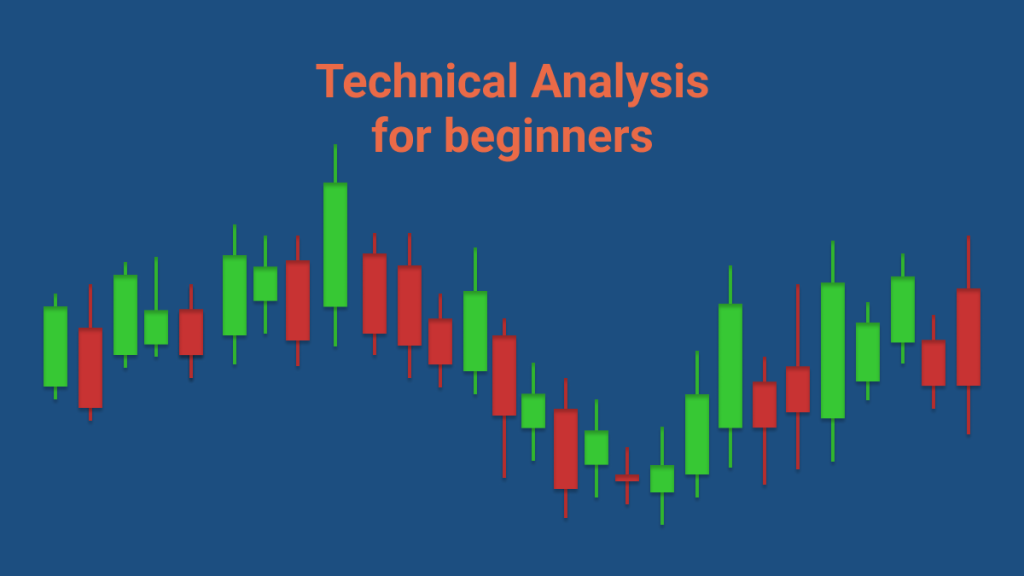Learn the basics of how historical data, price trends, and market patterns can help predict future movements in forex, crypto, and stocks. Discover top tools like candlestick charts, RSI, and moving averages to build a winning trading strategy.

Table of Contents:
- Key assumptions of technical analysis
- Tools and indicators in technical analysis
- How technical analysis is conducted
- Importance of technical analysis
- Key takeaways
Many investors study stocks by looking at their fundamentals—such as revenue, valuation, or industry trends—but these factors are not always visible in the market price. Technical analysis aims to forecast price movements by analysing historical data, mainly focusing on price and trading volume.
Technical analysis in trading examines the price of an asset, such as a forex pair, by using historical price charts and market data. It is based on the idea that identifying past market patterns can help predict future price movements with reasonable accuracy. In simple terms, technical analysis studies how supply and demand change over time, as shown by the price movements of an asset or security.
This method can be applied to any market or security, including forex and cryptocurrencies, such as forex technical analysis or crypto technical analysis.
When discussing technical analysis, traders refer to studying price and volume trends visible on a chart. Unlike fundamental analysis, which focuses on factors like news and economic reports, technical analysis focuses on price patterns over different timeframes, from a few seconds to a month. Traders use tools like indicators to understand the direction of price movement in a specific market.
Some traders rely only on technical analysis, while others prefer fundamental analysis. Many combine both approaches to develop a stronger trading strategy.
For example, combining technical and fundamental analysis can reveal how oil prices correlate with currency values. This can help traders make informed decisions. Countries that produce and export large amounts of oil rely on high oil prices, so a sharp drop in oil prices can impact the value of their currency.
Key assumptions of technical analysis
To effectively use technical analysis, it is essential to understand its three basic assumptions:
- Market prices reflect information: Technical analysis assumes that all relevant information about a stock is already factored into its price. This includes fundamental factors, market sentiment, and external events. Consequently, studying price movements offers valuable insights into market dynamics.
- Stock prices follow trends: Historical data suggests that stock prices tend to move in trends rather than randomly. These trends can be upward, downward, or sideways. Identifying these trends enables traders to make better investment decisions.
- Patterns are repetitive: Over time, specific patterns in stock prices tend to repeat. Recognising these recurring patterns allows traders to predict future price movements with a degree of probability.
Tools and indicators in technical analysis
Technical analysis relies on various tools and indicators to study and predict price movements. Below are some of the most commonly used tools:
- Technical charts: Charts provide a visual representation of price and volume data. Different types of charts serve various analytical purposes:
- Line chart: This is the simplest type of chart, plotting only the closing prices over a specific time period. It helps identify trends and support or resistance levels but lacks details like intra-day price fluctuations.
- Bar chart: Bar charts display high, low, open, and close prices for a given period. These are particularly useful for understanding market volatility and making informed decisions.
- Candlestick chart: One of the oldest and most widely used charts, candlestick charts show open, close, high, and low prices for a trading period. Each candlestick has a body representing the price range between the open and close, and wicks (or shadows) indicating the day’s high and low. Patterns formed by candlesticks can signal bullish (price rise) or bearish (price fall) trends.
- Renko chart: This chart is based solely on price movements, filtering out minor fluctuations. It uses bricks to indicate price changes, with each brick representing a set price movement. Renko charts simplify trend identification but may omit certain price details.
- Point and figure (P&F) chart: P&F charts plot price movements without considering time. These charts are effective for identifying support and resistance levels while avoiding false breakouts.
- Moving averages: Moving averages help smoothen price data, revealing trends by calculating the average price over a specific period. They are classified into:
- Simple Moving Average (SMA): The average price over a set time frame.
- Exponential Moving Average (EMA): Gives more weight to recent prices, making it more sensitive to new data.
Shorter moving averages are preferred for short-term trading, while longer moving averages suit long-term investments. Moving averages also help identify support and resistance levels.
- Momentum indicators: Momentum indicators measure the speed of price movements, helping traders understand the strength or weakness of a trend. Popular momentum indicators include:
- Moving Average Convergence Divergence (MACD): This indicator shows the relationship between two EMAs (typically 12-day and 26-day). A 9-day EMA (signal line) is plotted alongside to indicate buy or sell signals based on the crossover.
- Relative Strength Index (RSI): RSI is an oscillator that measures price change and its speed, plotted on a scale of 0 to 100. An RSI above 70 typically indicates overbought conditions, while below 30 suggests oversold conditions.
How technical analysis is conducted
Technical analysis involves studying price charts, applying indicators, and interpreting patterns. Below is a step-by-step approach:
- Choose a chart type: Select a chart that aligns with your trading goals. For beginners, line charts are easy to understand, while candlestick charts provide deeper insights.
- Identify trends: Look for patterns in price movements, such as uptrends (higher highs and higher lows), downtrends (lower highs and lower lows), or sideways trends.
- Apply indicators: Use tools like moving averages or momentum indicators to confirm trends and gather additional insights.
- Spot support and resistance levels: These are price levels where the stock tends to halt or reverse its movement. Support levels indicate where buying pressure is strong, while resistance levels signify selling pressure.
- Look for patterns: Identify common chart patterns, such as head and shoulders, double tops, or flags, which can signal potential price reversals or continuations.
Importance of technical analysis
Technical analysis is widely used due to its practicality and effectiveness. Its benefits include:
- Quick decision-making: Unlike fundamental analysis, which requires in-depth scrutiny of a company’s financials, technical analysis allows for faster decisions by focusing on price data and patterns.
- Probability-based predictions: It uses historical trends to make predictions, providing traders with a statistical edge.
- Risk management: By identifying entry and exit points, technical analysis helps minimise losses and maximise profits.
- Applicability across markets: It is not limited to stocks; technical analysis is also used in commodities, forex, and cryptocurrency markets.
Key takeaways
- Technical analysis, which involves using charts to spot trading signals and price patterns, might seem complicated or mysterious at first.
- Beginners should start by learning how technical analysis works as a way to understand market behaviour and identify chances to make a profit.
- Focus on one trading method and create a clear, disciplined strategy to follow, avoiding emotional decisions or constant second-guessing.
- Choose a broker who can support your plan cost-effectively while offering a trading platform with the tools needed for success.
Himani Verma is a seasoned content writer and SEO expert, with experience in digital media. She has held various senior writing positions at enterprises like CloudTDMS (Synthetic Data Factory), Barrownz Group, and ATZA. Himani has also been Editorial Writer at Hindustan Time, a leading Indian English language news platform. She excels in content creation, proofreading, and editing, ensuring that every piece is polished and impactful. Her expertise in crafting SEO-friendly content for multiple verticals of businesses, including technology, healthcare, finance, sports, innovation, and more.








